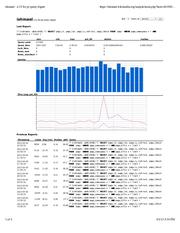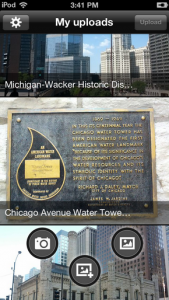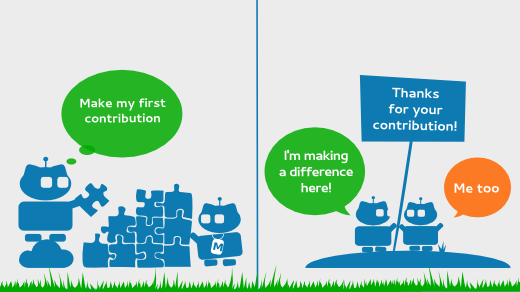This past Wednesday marked a milestone in the evolution of Wikimedia’s Database infrastructure: the completion of the migration of the English and German Wikipedias, as well as Wikidata, to MariaDB 5.5.
For the last several years, we’ve been operating the Facebook fork of MySQL 5.1 with most of our production environment running a build of r3753. We’ve been pleased with its performance; Facebook’s MySQL team contains some of the finest database engineers in the industry and they’ve done much to advance the open source MySQL ecosystem.
That said, MariaDB’s optimizer enhancements, the feature set of Percona’s XtraDB (many overlap with the Facebook patch, but I particularly like add-ons such as the ability to save the buffer pool LRU list, avoiding costly warmups on new servers), and of Oracle’s MySQL 5.5 provide compelling reasons to consider upgrading. Equally important, as supporters of the free culture movement, the Wikimedia Foundation strongly prefers free software projects; that includes a preference for projects without bifurcated code bases between differently licensed free and enterprise editions. We welcome and support the MariaDB Foundation as a not-for-profit steward of the free and open MySQL related database community.
Preparing For Change
Major version upgrades of a production database are not to be made lightly. In fact, as late as 2011, some Wikipedia languages were still running a heavily patched version of MySQL 4.0 — the migration to 5.1 required both schema changes, and direct modifications of data dumps to alter the padding of binary-typed columns. MySQL 5.5 contains a variety of incompatibilities with prior versions, thanks in part to better compliance with SQL standards. Changes to the query optimizer between versions may also change the execution plan for common queries, sometimes for the better but historically, sometimes not. SQL behavior changes may result in replication breakage or data consistency issues, while performance regressions, whether from query plan or other changes, can cause site outages. This calls for a lot of testing.
Compatibility testing was accomplished by running MariaDB replicas outside of production, watching for replication errors, replaying production read queries and validating results. After identifying and fixing a couple of MediaWiki issues that surfaced as replication errors (along the lines of trying to set unsigned integer types to negative values which previously caused a wrap-around instead of an error) we replayed production read queries using pt-upgrade from Percona Toolkit. Pt-upgrade replays a query log against two servers, and compares the responses for variances or errors. Scripts originally developed for our recent datacenter migration to simultaneously warmup many standby databases from current production read traffic helped with rough load testing and benchmarking. Along the way, a pair of bugs in MariaDB 5.5.28 and 5.5.29 were identified, one of which was a rare but potentially severe performance regression related to a new query optimizer feature. The MariaDB team was very responsive and quick to offer solutions, complete with test cases.
Performance Testing In Production
As a read-heavy site, Wikipedia aggressively uses edge caching. Approximately 90% of pageviews are served entirely from the edge while at the application layer, we utilize both memcached and redis in addition to MySQL. Despite that, the MySQL databases serving English Wikipedia alone reach a daily peak of ~50k queries/second. Most are read queries served by load-balanced slaves, depending on consistency requirements. 80% of the English Wikipedia query load (up to 40k qps) are typically handled by just two database servers at any given time. Our most common query type (40% of all) has a median execution time of ~0.2ms and a 95th percentile time of ~50ms. To successfully use MariaDB in production, we need it to keep up with the level of performance obtained from Facebook’s MySQL fork, and to behave consistently as traffic patterns change.

Ishmael views of pt-query-digest data collected via tcpdump for the most common Wikipedia read queries (pdf). The first page of a query shows data from db1042, running 5.1fb-r3753, the second from db1043 over the same time period, running MariaDB 5.5.30.
Once confident that application compatibility issues were solved and comfortable with performance obtained under benchmark conditions, it was time to test in production. One of the production read slaves from the English Wikipedia shard was taken out of rotation, upgraded to MariaDB 5.5.30, and then returned for warmup. The load balancer weight was then gradually increased until it and a server still running MySQL 5.1-facebook-r3753 were equally weighted and receiving most of the query load.
Also from the Percona Toolkit, we use pt-query-digest across all database servers to collect query performance data which is then stored in a centralized database. Query data is collected from two sources per server and stored in separate buckets — from the slow query which only captures queries exceeding 450ms, and from periodic brief sampling of all queries obtained by tcpdump. Ishmael provides a convenient way to visualize and inspect query digest data over time. Using it, along with direct analysis of the raw data, allowed us to validate that every query continued to perform within acceptable bounds.
For our most common query type, 95th percentile times over an 8-hour period dropped from 56ms to 43ms and the average from 15.4ms to 12.7ms. 50th percentile times remained a bit better with the 5.1-facebook build over the sample period, 0.185ms vs. 0.194ms. Many query types were 4-15% faster with MariaDB 5.5.30 under production load, a few were 5% slower, and nothing appeared aberrant beyond those bounds.
From there, we upgraded the remaining slaves one by one, before finally rotating in a newer upgraded class of servers to act as masters. The switch was seamless and performance continues to look good. We’ll be completing the migration of shards covering the rest of our projects over the next month. Beyond that, we’re looking forward to the future release of MariaDB 10 (global transaction IDs!), and are continually assessing ways to improve our data storage infrastructure. If you’re interested in helping, the Wikimedia Foundation is hiring!
Asher Feldman, Site Architect















